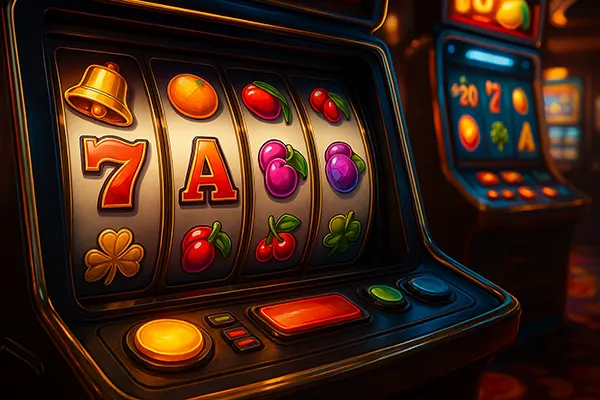
Role of Strategy in Poker Tournaments
Poker tournaments are a unique challenge where strategy plays a pivotal role in determining success. Unlike cash games, where chip values remain constant, tournament chips fluctuate in value as the game progresses. This dynamic nature requires players to adopt diverse strategies at different stages to maximise their potential winnings while minimising losses. In this article, we will explore the critical elements of strategy that define success in poker tournaments, focusing on early-game tactics, mid-game adjustments, and endgame decision-making.
Understanding the Early Game: Building a Solid Foundation
The early stages of a poker tournament are crucial for setting the tone of the game. Players often start with a sizeable stack relative to the blinds, allowing room for calculated risks and opportunities to accumulate chips. The key to a successful early game lies in selecting the right hands to play and understanding the table dynamics.
Hand Selection and Position
Hand selection is a fundamental aspect of early-game strategy. In these stages, players should aim to play tight and focus on strong starting hands such as high pairs and suited connectors. Equally important is the consideration of position. Being in a late position provides an advantage by allowing you to make decisions after observing your opponents’ actions. This can help you determine whether to play aggressively or fold.
Observing the tendencies of your opponents early on is another critical skill. For example, recognising whether someone is overly aggressive or conservative can inform your own approach. Equally, monitoring how others react to rising blinds or specific betting patterns can provide actionable insights to exploit later. Identifying weaker players during the early stages can offer opportunities to isolate them and build your stack more effectively.
In the early game, your primary goal is to avoid unnecessary risks while steadily building your chip stack. This requires patience and discipline to resist the urge to play marginal hands. Instead, focus on leveraging your position and capitalising on the mistakes of less experienced opponents. Additionally, small-ball poker techniques, such as frequent small raises, can help you control the pot size while testing your opponents’ resolve.
Mid-Game Strategy: Adjusting to the Evolving Field
As the tournament progresses, the blinds increase, and stacks become relatively shorter. The mid-game is where many players falter, as it requires the ability to adapt quickly to shifting dynamics. Effective chip management and well-timed aggression are vital during this phase.
Chip Management and Table Awareness
In the mid-game, survival becomes as important as accumulation. Players must keep a close watch on their stack-to-blind ratio, often referred to as the “M-ratio.” Maintaining a healthy stack relative to the blinds allows for flexibility in making decisions, whether it’s stealing blinds or defending against aggressive opponents.
Another vital skill in this phase is recognising opportunities to pressure medium stacks. These players often play cautiously to avoid elimination, making them prime targets for well-timed aggression. Conversely, avoid unnecessary confrontations with larger stacks that could jeopardise your tournament life. Adopting a balanced approach to aggression ensures you can pick up blinds and antes without exposing yourself to excessive risk.
Moreover, mid-game play benefits from heightened table awareness. Identifying players with large stacks who can bully the table and those on the verge of elimination helps refine your strategy. Effective table reads, combined with calculated risks, can lead to significant chip accumulation while maintaining a solid position for the later stages. Recognising when to shift gears, from tight play to controlled aggression, can help you navigate through the middle phases efficiently.
Finally, flexibility is key. If the table dynamic changes—for example, when aggressive players are eliminated—it’s essential to adjust your play style accordingly. Adaptability ensures you can exploit new opportunities while avoiding predictable patterns. Paying attention to stack distribution and blind levels also allows you to anticipate critical moments, such as when to push or fold.

Endgame Tactics: Maximising Your Position
The final stages of a poker tournament are characterised by heightened pressure and quick decision-making. This is where strategic finesse and a strong psychological game can lead to significant gains. Players entering the endgame must focus on two main aspects: adjusting to short-handed play and executing precise all-in decisions.
Short-Handed Play and Final Table Dynamics
In short-handed play, hand values increase significantly, and players need to adjust their ranges accordingly. Bluffing becomes more effective, and the ability to read opponents is invaluable. At this stage, every decision is magnified, as small mistakes can result in elimination or missed opportunities for substantial gains. Being unpredictable in your betting patterns and leveraging your table image can be decisive factors in dominating short-handed scenarios.
At the final table, understanding pay jumps and adjusting aggression levels based on prize equity can make the difference between a modest payout and a significant win. For example, applying pressure on players hesitant to risk elimination can yield considerable benefits. Conversely, avoiding unnecessary confrontations with chip leaders can protect your position. Awareness of independent chip modelling (ICM) principles can help you make decisions that maximise your overall equity.
Endgame tactics also involve analysing the tendencies of opponents who may become overly cautious due to the high stakes. Exploiting this hesitation with well-timed bluffs or aggressive bets can often secure critical advantages. Additionally, focusing on timing is crucial; knowing when to push all-in or when to wait for a stronger position can influence the overall outcome of the tournament. Maintaining composure under pressure and understanding the psychological impact of key decisions can further enhance your endgame performance.
In conclusion, the role of strategy in poker tournaments cannot be overstated. From the early stages to the final table, success hinges on a player’s ability to adapt, analyse, and execute decisions effectively. By mastering the fundamentals of poker strategy and continuously refining your approach, you can significantly improve your performance and, ultimately, your results in poker tournaments.



